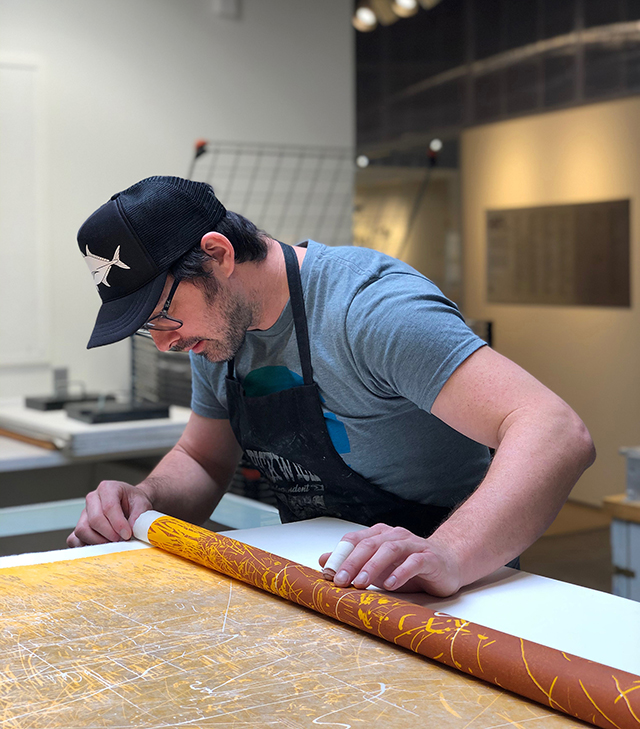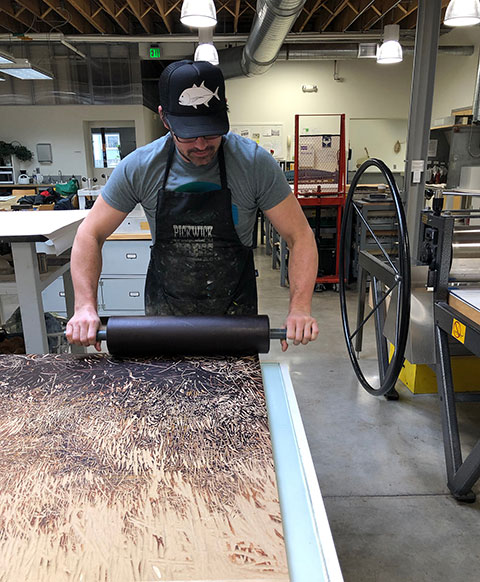Mike Marks
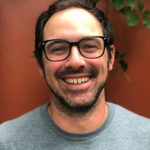 Mike Marks (b. West Virginia, 1984) lives and works in Minneapolis, MN. His prints are included in the permanent collections of institutions such as the Museo do Douro (Douro, Portugal), Munakata Shiko Memorial Museum of Art (Aomori, Japan), Zuckerman Museum of Art (Kennesaw, GA), and the California College of Arts (Oakland, CA). Mike Marks has been an artist-in-residence at South Dakota State University, the University of Evansville, the Tides Institute and Museum of Art, Crooked Tree Arts Center/ Good Hart Residency, Stone Trigger Press, and Acadia National Park, to name several. His work has exhibited both nationally and internationally, and he is currently a 2020 McKnight Foundation Fellow in Printmaking and fellow in residence at the Highpoint Center for Printmaking in Minneapolis.
Mike Marks (b. West Virginia, 1984) lives and works in Minneapolis, MN. His prints are included in the permanent collections of institutions such as the Museo do Douro (Douro, Portugal), Munakata Shiko Memorial Museum of Art (Aomori, Japan), Zuckerman Museum of Art (Kennesaw, GA), and the California College of Arts (Oakland, CA). Mike Marks has been an artist-in-residence at South Dakota State University, the University of Evansville, the Tides Institute and Museum of Art, Crooked Tree Arts Center/ Good Hart Residency, Stone Trigger Press, and Acadia National Park, to name several. His work has exhibited both nationally and internationally, and he is currently a 2020 McKnight Foundation Fellow in Printmaking and fellow in residence at the Highpoint Center for Printmaking in Minneapolis.
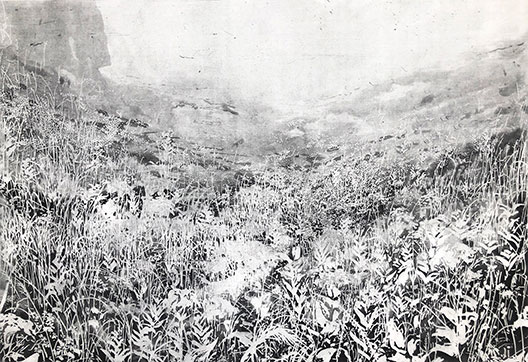
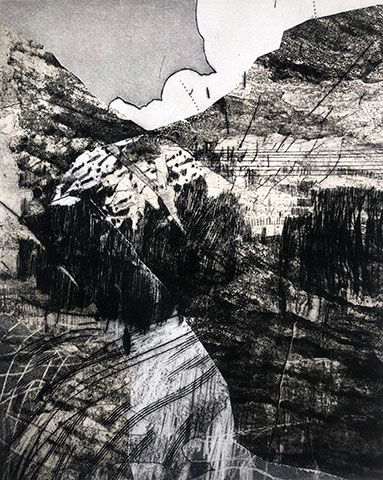
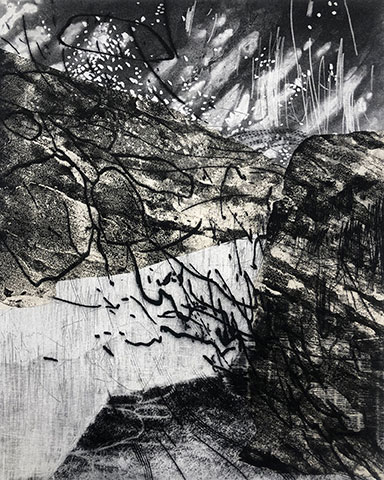
“My artwork focuses on landscapes under duress of change, using printmaking as an analogy for the mechanisms that reshape the environments around us. Immersing in location is central to creating my work and gaining perspective from within natural environments.
Lingering Still is a spitbite etching from a body of work titled No Trace, focused on remnant and restored tracts of tall-grass prairie in Minnesota. This print utilizes an initial drawing on copper that blocks the hand-applied etching process before being removed, thus inverting the representation of grasses into blank spaces and marking a point in the image process where no changes can be worked back into the plate. Lingering Still and its companion works all incorporate an act of deletion in their image-making process as a reflection of the fragility of wild habitats, and a reminder of the potential for habitat loss.
Cut Through and Precipice are both part of a series of fifteen prints titled The Mountain Moves And I Stand Still based on time spent backpacking/fly-fishing in the Cloud Peak Wilderness of the Big Horn Mountains. I was inspired by how changes in the landscape are either hidden or revealed as you move through a space and how a single landmark can remain consistent as the rest of the terrain continually shifts. These prints are made by first relief printing directly from stone onto Japanese mulberry paper, cutting the dried prints apart, then adhering them using a chine-collé process while simultaneously printing the copper plates. The plates themselves are a combination of spitbite etching and drypoint.” Michael Marks
